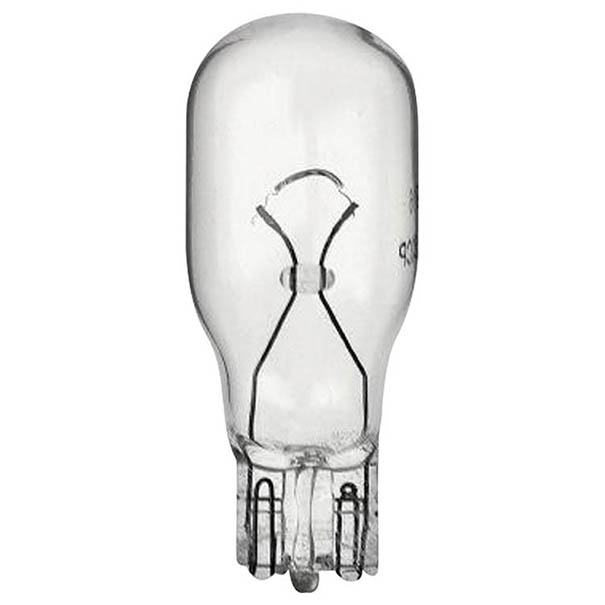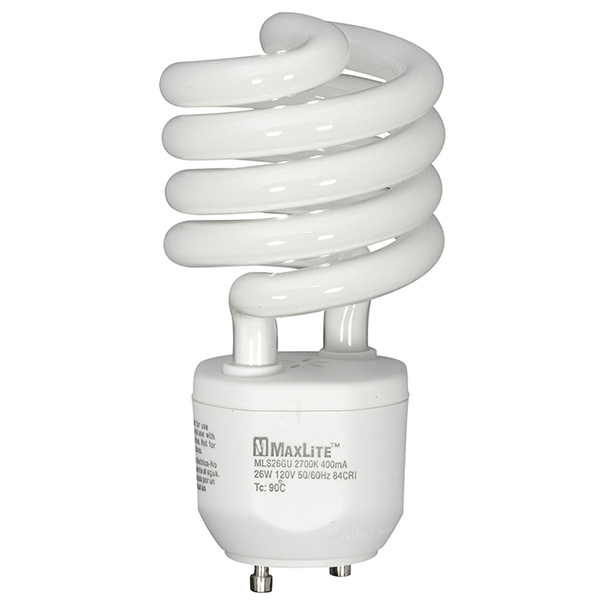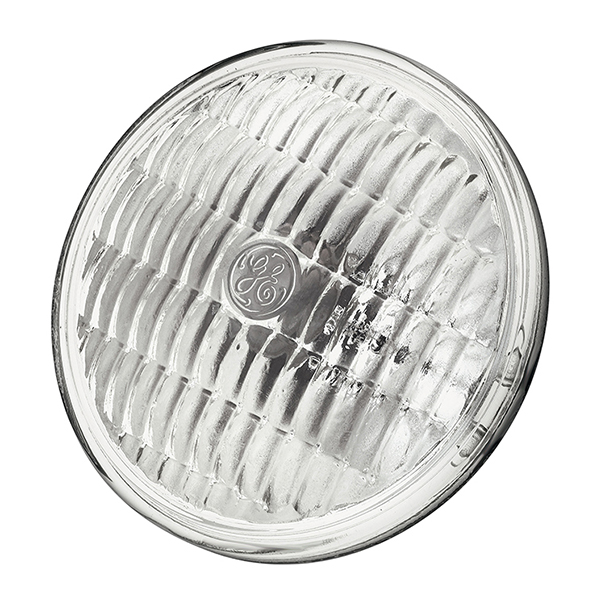The New Lighting Technology: A Guide to Light Bulb Types
Lighting does more than brighten your home, it adds to a room's style, function, and overall look and feel. The options available are almost limitless and more energy efficient than ever before. Choices range from the traditional incandescent light bulbs, compact fluorescent to high-tech LED emitters with everything in-between.
Light bulbs vary in their type, amount of light they produce, the amount of energy they use, and the color of light they emit. With so many light bulb options out there, how do you know what works best for a particular application? Understanding the differences between the choices available can help you select the right bulb to suit your needs.

The right lighting enhances a room's functionality, style, and ambiance.
Choose the Wattage for Your Fixture
Check the manufacturer information on your lighting fixture for the maximum wattage it will take. Packaging on new lighting fixtures will clearly state the wattage or power the bulb consumes. Select bulb(s) that list the maximum wattage or less than the rating of your fixture. Using a higher wattage can generate excessive heat and create a fire hazard or cause damage to your lighting fixture.
Compare Efficiency Ratings
Manufacturers of incandescent, compact fluorescent, and LED light bulbs are required by law to use labeling on their consumer packaging that lists not only the wattage, but the lumens or bulb's brightness. Since wattage is a measurement of energy use, this measurement alone makes it difficult to compare traditional incandescent to compact fluorescent bulbs. The labeling now provides information about brightness (lumens), energy cost, life expectancy, light color or appearance (warm or cool spectrum), wattage, and mercury content to better help consumers make an informed choice.
Types of Lighting

Incandescent light bulbs are the traditional choice for most light fixtures.
Incandescent Bulbs
Incandescent light bulbs have been around since electric lighting came into use. The most commonly used type of light bulb, they produce light when the electric current passes through a filament which heats up and glows.
Though inexpensive and widely available, they are not the most energy efficient choice. They range from 15 to 150 watts and emit a soft yellow-white light in all directions though newer versions emit a more neutral white light. These bulbs comes in a variety of shapes and sizes in clear, frosted, or colored glass to give you a wide selection of options. They are good for ambient and task lighting with high levels of brightness.

Compact fluorescent bulbs are long-lasting and energy-efficient.
Fluorescent and Compact Fluorescent (CFL) Bulbs
Fluorescent bulbs produce light when an electric arc passes between cathodes, exciting mercury and other gases within the bulb. The resulting radiant energy is converted to light by the phosphor coating inside the bulb. Because they use 20%-40% less electricity and last up to 20 times longer than incandescent bulbs, fluorescent bulbs are more energy efficient and less costly to use. However, due to the fact they contain mercury, they must be disposed of properly to protect the environment.
These bulbs emit a warm tone similar to incandescent bulbs. Fixtures that use long fluorescent tubes have electronic ballasts that turn them on instantly and operate without the characteristic hum. Compact fluorescent bulbs (CFLs) screw into lamp sockets in place of incandescent bulbs. Choose a size that will fit into the lighting fixture without protruding from the shade or glass diffuser. If using the fixture with a dimmer, be sure to select a CFL labeled as dimmable.
Parabolic Reflector Bulbs (PAR)
Used primarily in recessed (can) and track lighting, parabolic reflector bulbs control the direction of the light more precisely and accurately. PARs that have a weatherproof casing to make them water-resistant are also used for outdoor spot, flood, and landscape lighting fixtures.
Reflectorized Bulbs
Reflectorized bulbs are cone-shaped bulbs with a reflective coating inside the bulb that focuses the light beam in one direction rather that emitting it from all around the bulb. They emit double the amount of light on an area as a general service bulb of the same wattage. They are found in car headlights, track lighting, and landscape lighting such as flood lights and spot lights.

Halogens are popular in track, recessed, and spot lights.
Halogen Bulbs
Halogen bulbs emit a bright, white light in a color spectrum close to that of the midday sun. These bulbs produce more lumens per watt than standard incandescent bulbs and have a longer lifespan. Halogen bulbs are filled with an inert gas such as iodine or bromine that heats up and bonds with vaporizing tungsten molecules when the light is turned on. The resulting light reaches higher color temperatures with the best color rendering index (CRI) or ability to show object colors realistically. Smaller in size with a more intense light output, they are a great choice for task and outdoor lighting.
Since they burn hotter than other bulbs, Halogen lamps use safety shields to reduce the risk of fire. They also require more caution when handling. Always wait until the bulb is cool to the touch before changing a Halogen and use cotton gloves or a clean rag to prevent skin oils from your hand from getting on the bulb. These oils cause the bulb to burn hotter, reducing its life.
Halogen bulbs come in both line voltage and low voltage types.
- Line Voltage (120-volt) Bulbs - Line voltage Halogen bulbs come in a variety of types for multiple uses. They provide powerful, long-lasting lighting, and are more energy-efficient than traditional incandescent light bulbs.
- Small-sized MR16 halogen bulbs are perfect for hidden lights in displays, track lighting, or pathway lights. They come in both bi-pin and GU (twist and lock) base styles.
- PAR halogens are used for general spot or floor lights, track lighting, and recessed lighting. They make great replacements for high-color saturation lighting in downlight applications.
- Colored halogen bulbs are popular in stage lighting, celebrations, and ambient mood lighting. They provide powerful and long-lasting lighting.
- The T-3 type are double-ended bulbs that come in a variety of base types. They are used in wall sconces, torchieres, and outdoor floodlights. Because of the double-end design, the lighting fixture will control the direction of the light.
- Low Voltage (12-volt) Bulbs - MR8, MR11, and MR16 (mini-reflectors) light bulbs provide excellent beam control while their miniature size makes them excellent for smaller track and recessed fixtures. You will also find them in many outdoor landscape accent lighting fixtures.
- PAR36 bulbs offer superior beam control, especially over long distances. They are used in track, recessed, and outdoor landscape lighting fixtures.
- Miniature T-4 bi-pin bulbs are used in pendants, halogen desk lamps, and linear, low-voltage track systems. Their small size also is ideal for cove and under-cabinet lighting uses.
Xenon Bulbs
Xenon bulbs emit a white light similar to halogen bulbs, but have a longer life rating (up to 20,000 hours) similar to fluorescent. Operating at a cooler temperature than halogen, these miniature bulbs are designed for use in strip, under-cabinet, and cove lighting fixtures where their small size and lower temperatures make them ideal. They include rigid-loop, festoon, and wedge-base styles.

Energy-efficient LED light bulbs last longer than other varieties.
Light Emitting Diodes (LEDs)
Popular, high-tech, and energy-efficient, Light Emitting Diodes or LED lights feature a semiconductor chip embedded in a plastic capsule. When voltage is applied to the negatively charged semiconductor, the electrons combine and create light. Since they are small, multiple LEDs are sometimes combined into a single light bulb.
LED lighting is used in a variety of applications including undercabinet strip lighting, ceiling fixtures, outdoor lamps, downlights, signage, and decorative lights.
LED bulbs generally will last a great deal longer than any other light source along with being very energy-efficient. To ensure the longest life, buy good quality bulbs and look for the Energy Star symbol.
High-Density Discharge (HID) Bulbs
High-Intensity Discharge (HID) bulbs are energy-efficient and offer long life. These bulbs have an arc which passes between two electrodes in a pressurized tube. This causes various metallic additives to vaporize and release large amounts of light. Electricity enters through a ballast in the fixture which provides the initial high-voltage jolt of electricity to ignite the bulb.
HIDs come in four varieties: Metal Halide, High-Pressure, Sodium Low-Pressure, and Sodium Mercury Vapor. Except for metal halides, HID bulbs do not produce pleasing light colors. Because of this, they are usually used for outdoor security and area lighting in stadiums and other public facilities.









